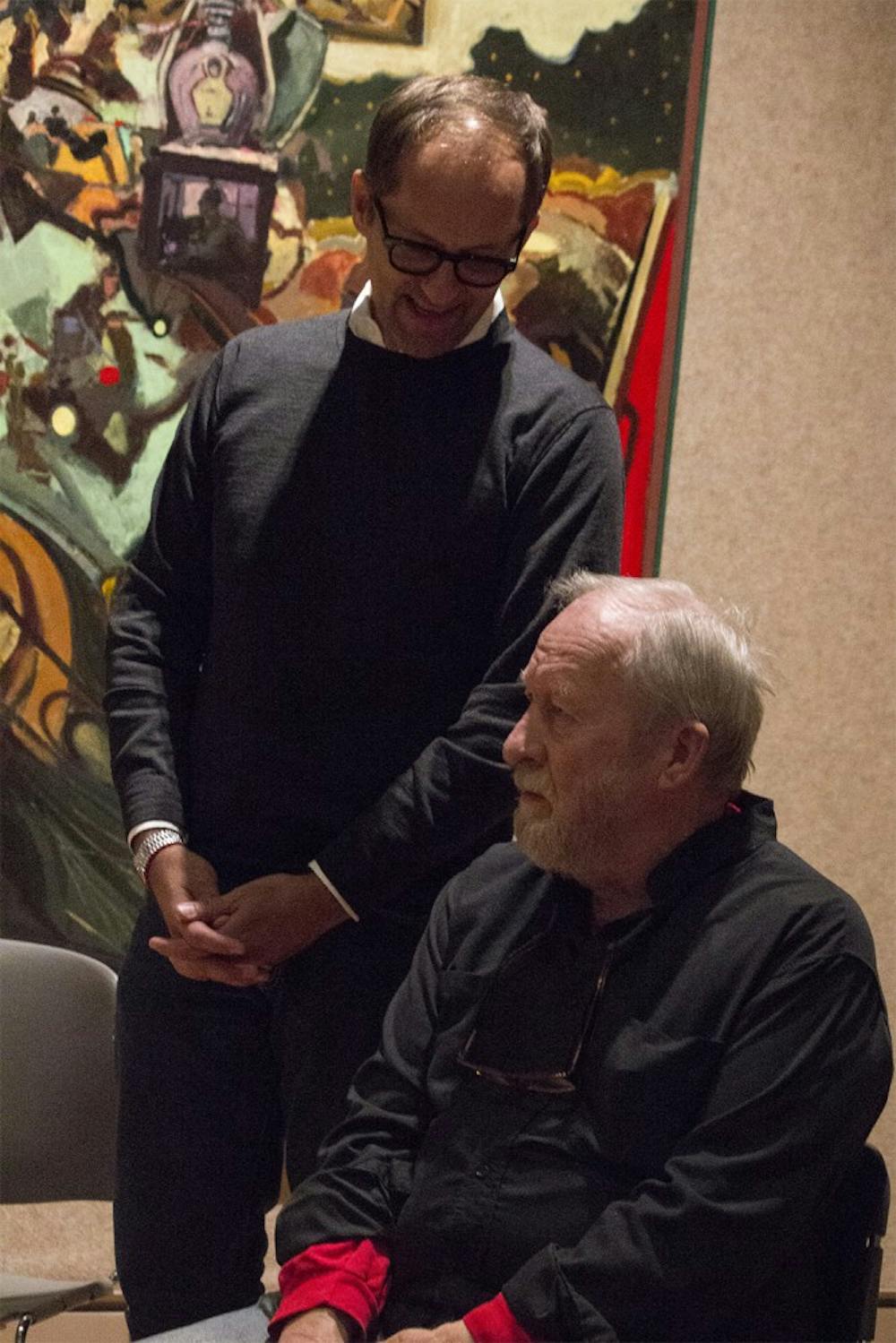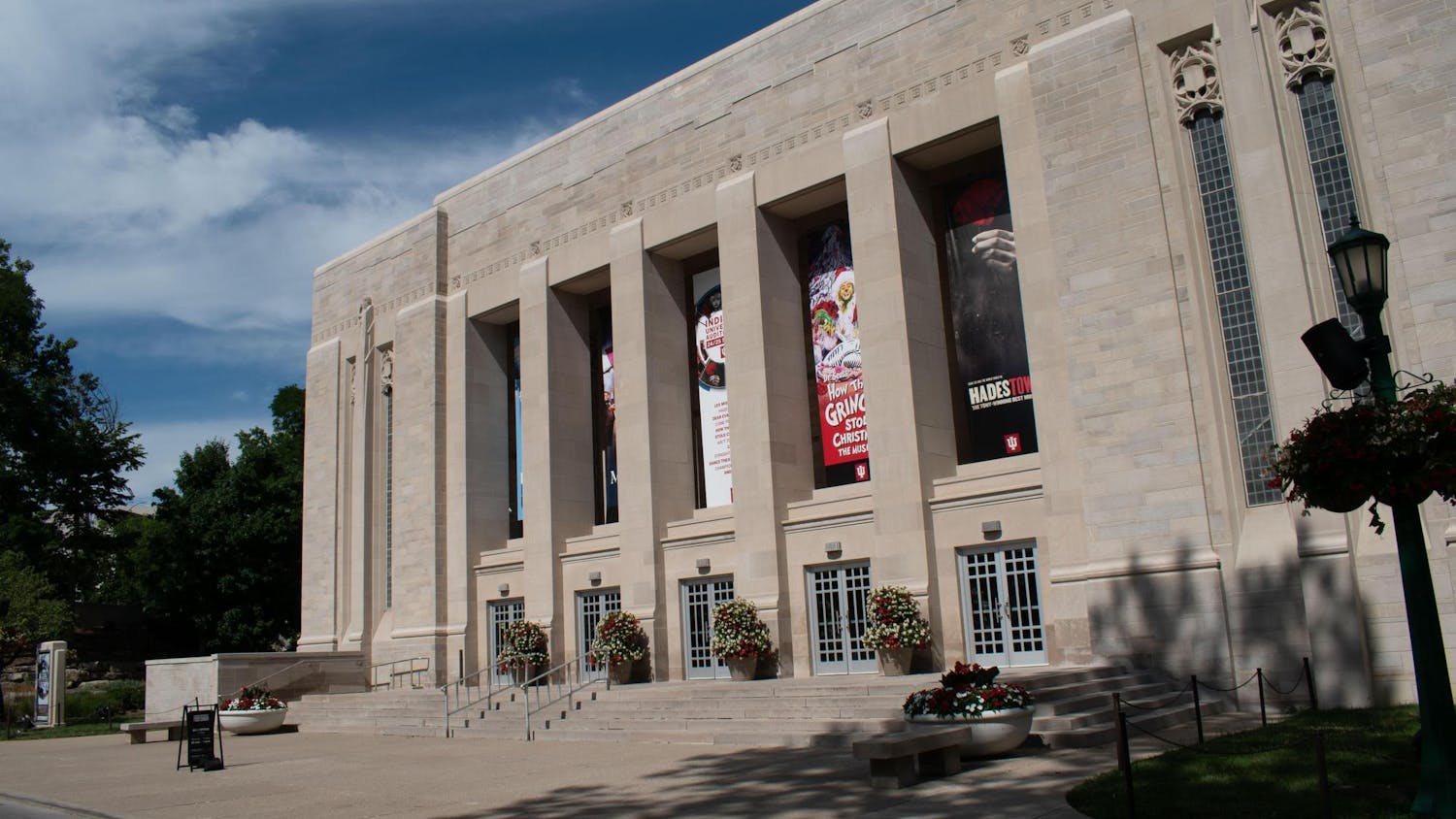On Saturday, two of the collectors sat alongside Barnes in the middle of the special exhibitions gallery and answered questions about collecting, the allure of art and their constantly growing relationship with Barnes as an artist and friend.
Brewer opened the talk with a brief introduction to the event and of Barnes, moderator Michael Rooks and collectors Larry Aronson and Tim Wittman.
“It was my honor to be the curator for the exhibition ‘Grand Allusions: Robert Barnes — Late Works 1985-2015,’” Brewer said. “Because we had collectors that were with us, we decided this would be the perfect opportunity to do a collectors’ panel.”
Rooks, curator of modern and contemporary art at Atlanta’s High Museum of Art, led the discussion first with what makes the collector such an important person in the art scene.
“As a museum curator, collectors are a special variety of people because collectors are individuals who make a connection with art,” Rooks said. “That’s what we always seek to do in a museum: whether it’s in special exhibition galleries or exhibitions like this one, to make a connection with an audience.”
Barnes interjected at the end of Rooks’ statement to add his own appreciation for the collector.
“There are a lot of collectors out there, and you should speak up, too,” Barnes said to colleagues in the audience. “All my collectors are very dear to me.”
The first question Rooks posed was about each collector’s start in the art world and how they initially made contact with Barnes’ work.
Aronson answered first, telling the story of a scholarship in painting, a sickness that kept him down for a while and ultimately how he and his wife began the process of art collection together. He said he believes a good work of art engages the viewer in a dialogue.
“In a good painting, the artist asks questions,” Aronson said. “Those questions are answered by the viewer with questions. A good work of art never dies — every time you look at it, it asks another question. If there was ever an artist that does what that is supposed to do, it’s Robert Barnes.”
Wittman said his love of art came from a Boy Scout trip during his youth to an art museum. While the rest of the troop left after 45 minutes, Wittman said he remained alone for 4 1/2 hours, enthralled by the works in front of him.
The reason Barnes’ works are so captivating in that same way is they play on his urge to ask the question, “Why?,” an urge that developed early on in his life, Wittman said.
“I see Robert asking that question ‘why’ and giving us the opportunity to see in his paintings what could be an answer, only to reproach the answer in the same image the next day. Larry and I are absolutely on the same page. Robert provides us with a wonderful opportunity to continue.”
New IUAM Director David Brenneman even posed a question to the panel about how they make the ultimate decision to bring a piece into their homes.
Aronson said it is a team effort by him and his wife. At first, smaller size and bigger message acted as criteria. Over the years, their perspectives changed.
“Our collection couldn’t be the same without the two of us together,” Aronson said. “I worked downtown, she was home raising kids. I would go the opening, I would put a hold on a painting or a work of art. She’d come the next day, she’d put a hold on a work of art. If it wasn’t the same work of art, we didn’t buy. Ninety-five percent of the time, it was the same.”
Wittman added that though his marriage started after his collection, teamwork and mirrored interests are important in his collecting as well.
“When I was seeing the woman who became my wife, she came over and she said, ‘Wow, look at all this,’” Wittman said. “It spurred the kind of conversations I always thought I should have with a future partner. Fortunately, we’ve found the same commonality when we’ve looked at work since. It’s been a real pleasure to do that together.”






